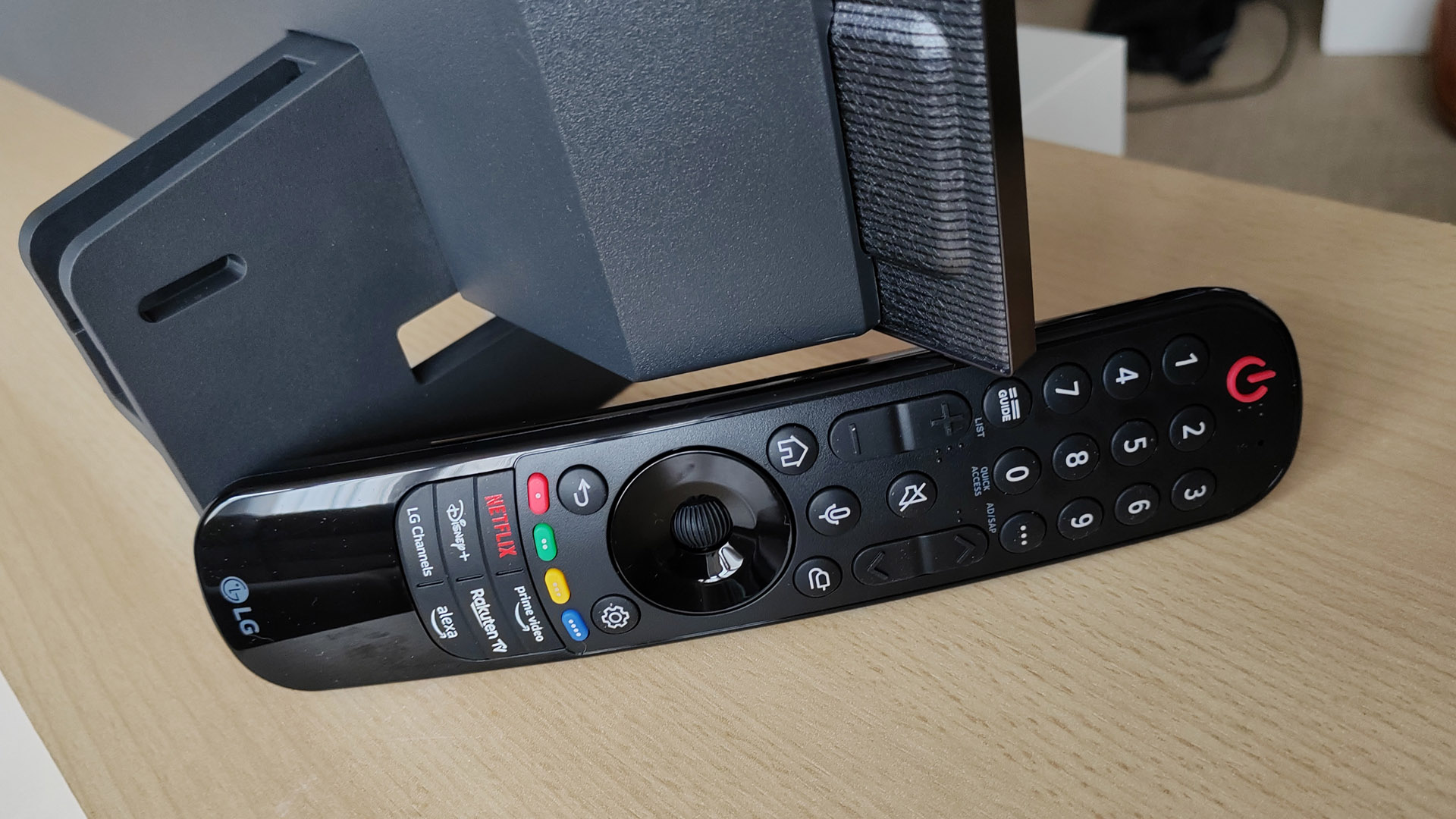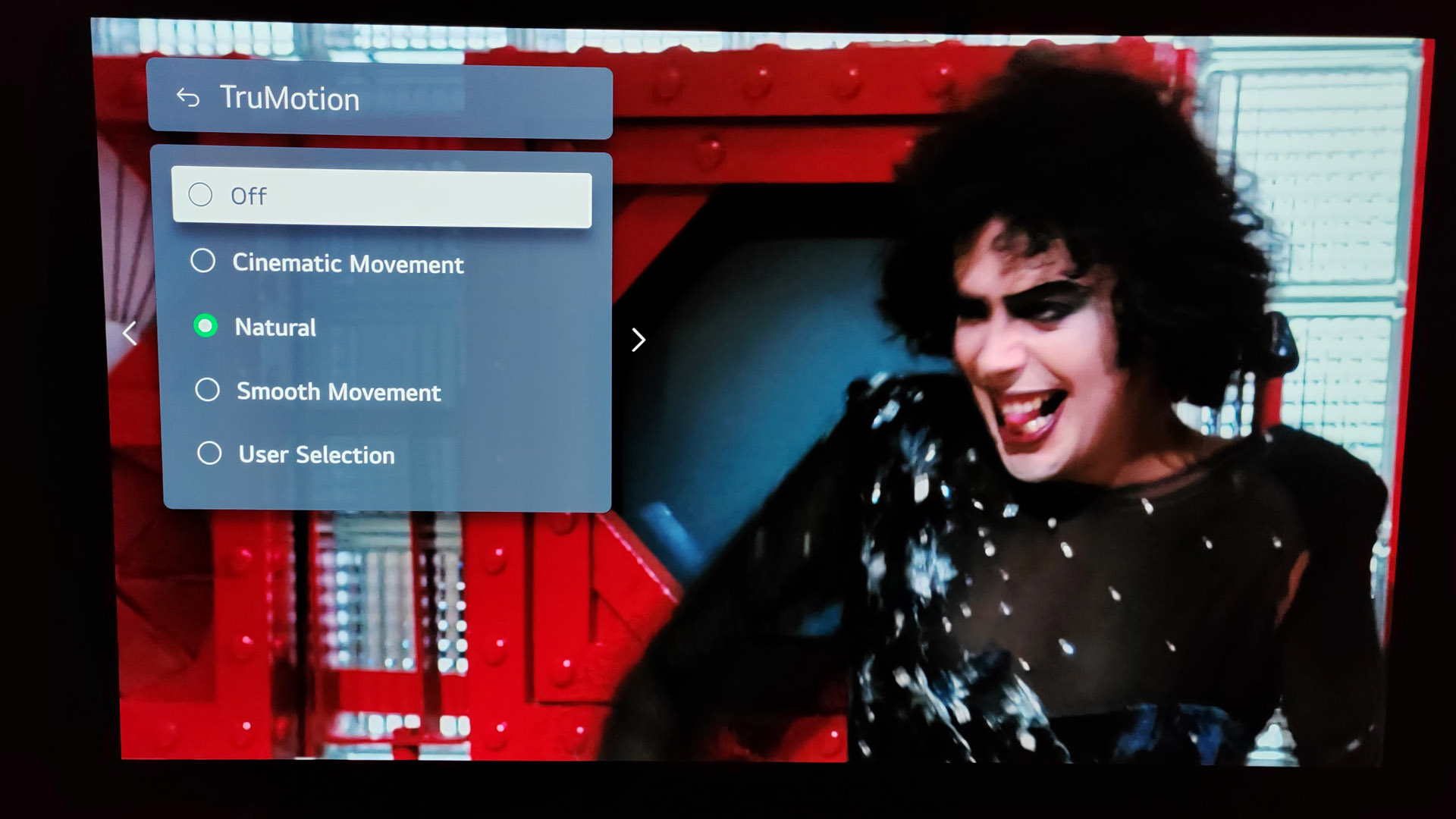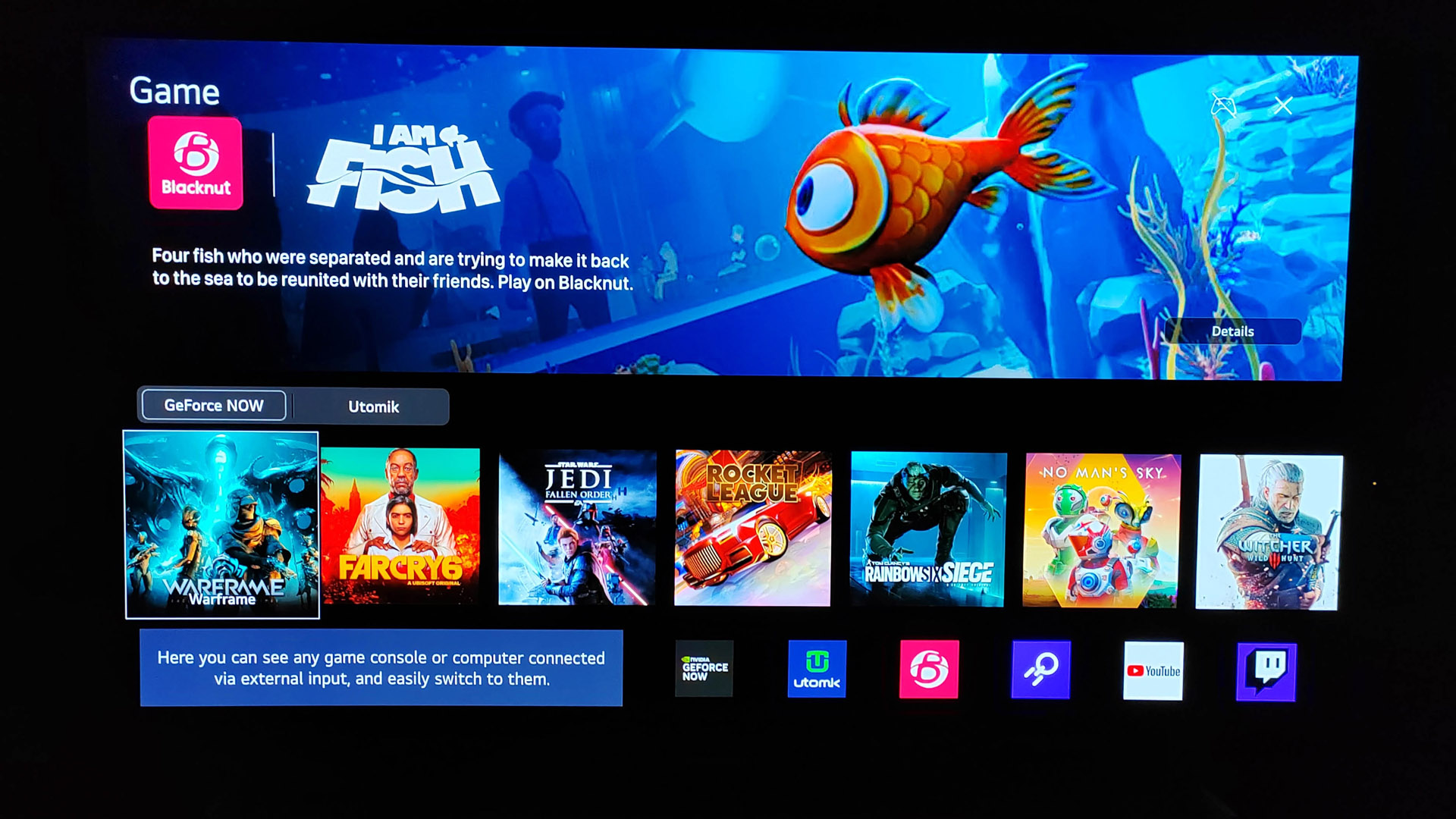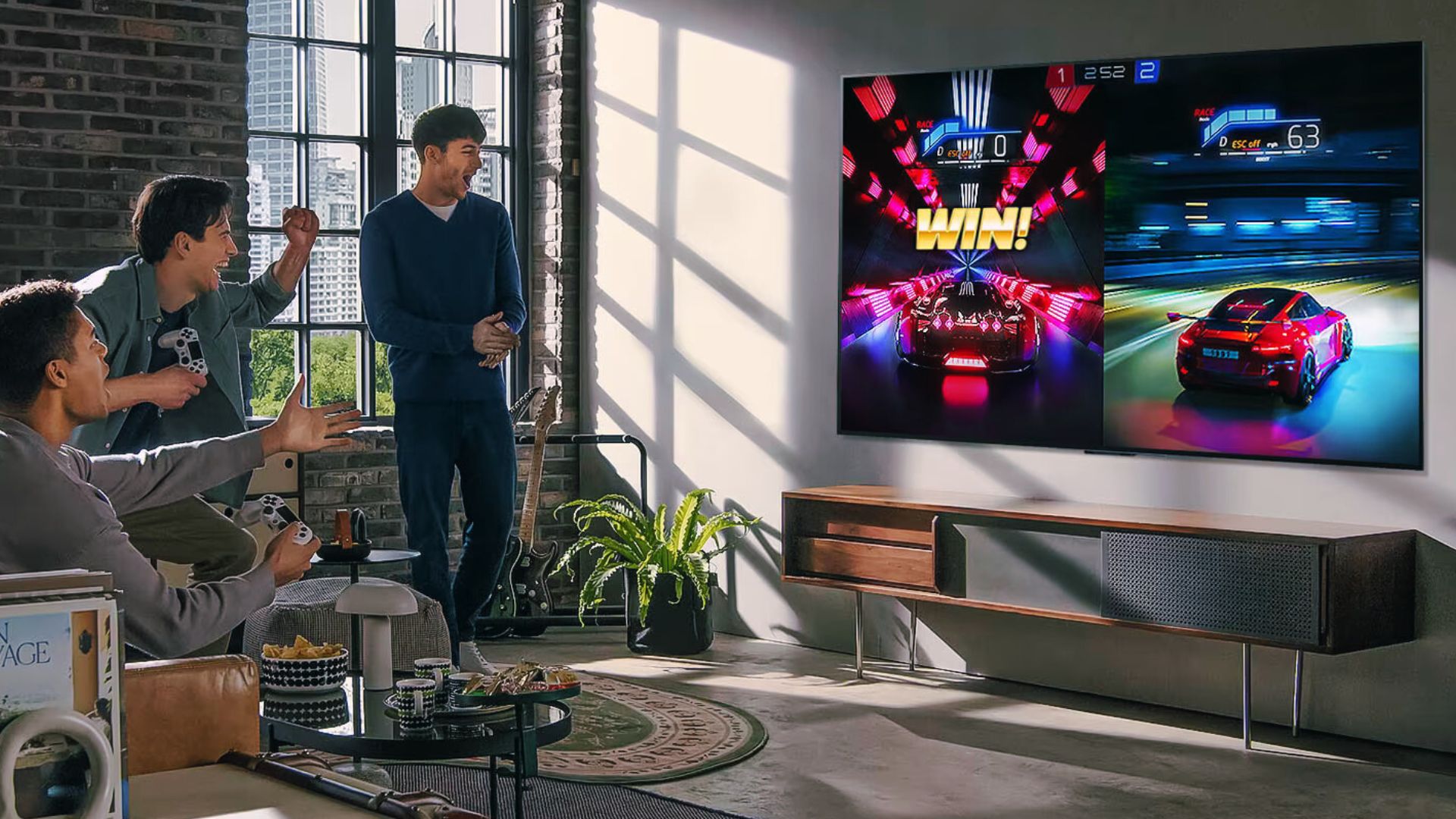GamesRadar+ Verdict
This 42-inch OLED is ideal for close-quarter gaming, offering excellent image quality and a quartet of 120fps capable HDMI inputs. It’s also a terrific small-screen smart TV, but the price tag is toppy.
Pros
- +
Dynamic, color-rich images
- +
4k 120 FPS HDMI inputs
- +
Game Dashboard
Cons
- -
Mediocre audio
- -
Lacks the HDR dynamics of larger C3 models
- -
No support for HDR10+
Why you can trust GamesRadar+
The LG OLED C3 is an Evo-class OLED flatscreen, powered by the brand’s latest Alpha 9 Gen 6 processor. The majority of C3 models earn their EVO stripes courtesy of clever Brightness Boosting algorithms. However, the 42-inch model tested here, as well as its 48-inch sibling, don’t get any such luminosity uplift, simply because the small pixel size on these panels simply can’t benefit from brightness algorithms.
So does it actually warrant EVO status? Probably not. But don’t let that put you off. The C3 is still up there with the best gaming TVs, in part thanks to its updated version of LG’s webOS platform. Now a two-page design, it uses nested folders to reduce screen clutter, and has a customizable menu, which allows you to prioritize the settings you use the most. In-game chops are good too. The set boasts 4k 120HZ support on all four HDMI inputs, as well as extensive VRR coverage and a dedicated game interface.
Available now, the LG C3 range comes in 83-, 77-, 65-, 55-, 48- and 42-inch screen sizes which are priced at £6,499/$5,299, £3,99 /$3,599, £2,899/$2,599, £2,099/$1,899, £1,599/$1,499, and £1,499/$1,399 respectively. Australian buyers will find the same models priced at AUS$8,995, AUS$6,795, AUS$4,295, AUS$3,295, AUS$2,895, and AUS$2,595 respectively.
As you can see, there’s not a significant saving to be had by buying the smaller screen models. They’re actually more expensive than some rival 55-inch OLED screens. I’m testing the 42-incher for this review.
Design and Features
With its minimal border and dark metal finish, the C3 is undeniably a slick looker that'll give any of the best OLED TVs a run for their money. Build quality is high. While the larger models in the C3 range feature a central pedestal stand, the 42-inch model on my test bench comes with two widely spaced feet. This is a welcome refinement at this size, as it makes the screen more suitable for desktop gaming use. There’s more room for a keyboard, mouse, and associated tech.
The 42OLEDC3 is probably a little deeper than you might imagine, at 41mm. Larger OLED screens combine a wafer-thin screen with an electronics and interface chassis. Here, said chassis takes up virtually the entirety of the rear, due to the smaller screen area.

Connectivity comprises four HDMI ports, all of which are v2.1 compliant which puts the C3 in league with the best 120Hz 4K TVs. HDMI 2 is assigned eARC and ARC duties, for use with a soundbar or external audio system. There’s also Freesync Premium and NVidia G-Sync VRR support. Additionally, there are three USB bays, Ethernet, and an optical digital audio output.
The C3 has two tuners, one terrestrial, and the other satellite. Buyers in the UK get Freeview Play, with its rollback TV guide and integrated catch-up services. This is neatly integrated into webOS 23.
I think LG’s Magic Remote control, with its onscreen cursor, is a bit of an acquired taste. If you’re migrating to the C3 from the likes of an LG OLED C2, you’ll be well aware of its foibles. If not, it will probably take a little bit of getting used to - that cursor never seems to go where I want it to.

Still, the choice of streaming services on webOS is immense. The zapper has dedicated buttons for Netflix, Prime Video, Disney+, Rakuten TV, and LG Channels, and there’s much more in the app store. The webOS platform also supports Matter smart devices.
There’s a dedicated gaming dashboard, with Game Optimiser, to manage relevant settings, including latency, VRR mode, and Game Genre settings. The latter offers optimization for a variety of gaming genres. You can select Standard, FPS, RPG, RTS Sports, and Users.
While it’s often difficult to perceive a difference between them during gameplay, I did find myself using them, if only in the hope of clawing some minor competitive advantage. Better to be safe than sorry on the battlefield! The game dashboard also offers cloud games, specifically GeoForce Now titles and casual fodder from Utomik.
Performance
Brightness algorithms aside, the picture quality on this 42-inch OLED is remarkably good, although not dramatically different from what you’ll find on last year’s C2 OLED models. Superb fine detail, coupled with punchy contrast and lush colors, make this a lovely screen to peer at.
The inky blackness that self-emissive pixels offer is perfect for movie nights (letterbox bars are solid black) and cinematic TV show bingeing. The colors are vibrant.
Of the various picture pre-sets, Standard and Vivid suit most mainstream telly viewing. I found the Cinema and Cinema Home modes best for a more theatrical performance.

Of the two film modes on offer, I actually preferred Cinema Home, which gives a lift to mid-tone luminance and delivers more overt color saturation, compared to the standard Cinema mode and industry-standard Filmmaker mode. These benefits seem more acute on this smaller OLED screen. Movies have a little more pop.
Motion handling is undeniably good. LG’s TruMotion suite has a number of options, and they’re all very effective. The brand implemented a new picture interpolation technique (in 2022) which smoothes the image to reduce 24p judder, and increases frame count to 120 a second. It’s smooth but not entirely cinematic.

I found the best interpolation to be the Cinematic Movement mode, which allows the set’s processor to manage frame merging in real time, favoring original frames. This has the benefit of reducing judder without the image looking too soapy.
This C3’s HDR performance is very good. The 42-inch C3 averages around 670 nits in Standard picture mode and 700 nits in Vivid. I would actually expect the larger C3 models to outperform this, but I think this is a solid performance nonetheless, particularly if you’re using this model as a near-field gaming monitor. Greater peak brightness might actually be quite uncomfortable. Latency is reasonable. I measured 13.1ms input lag in Game mode (1080/60).
HD support covers HDR10, HLG, and Dolby Vision, along with the HGiG standard. There’s no support for HDR10+, the alternative to Dolby Vision which is favored primarily by Prime Video. Not the end of the world, but it is a niggle.

The set’s average picture level is relatively high and looks deliciously punchy with regular SDR material. Kicking back with The Rocky Horror Picture Show (HD, BBC), the shock of Little Nell’s red hair really pops against the inky black shadows of Frank N Furter’s castle.
Sonically, the diminutive C3 is nothing to write home about. It sports a pair of perfectly functional downward-firing speakers and sounds adequate. There’s an AI Audio mode, which attempts to push forward the soundstage and improve dialogue clarity, but I found it just a little bit exhausting to listen to. Probably best to plan for an upgrade to one of the best soundbars for TV.
Should you buy the LG OLED C3?

The 42-inch LG OLED C3 is an excellent small-screen OLED that works well both as a relatively compact everyday TV, as well as one of the best TVs for PS5 and Xbox Series X. The provision of four, fully loaded HDMI inputs is a bonus if you have high frame rate compatible consoles, and need room for expansion. Overall, the smallest LG C3 OLED is tailor-made for gamers but it comes with a hefty price tag.
HDR support is wide, although it's irksome that LG continues to snub HDR10+. Still, having Dolby Vision, HDR10 and HGiG support is probably all you’re really going to need. Black level, color fidelity, and detail are all top-notch.
I’m not sure I totally appreciate the new tweaks to webOS. It remains one of the more fiddly smart platforms to live with, certainly compared to intuitive alternatives like Panasonic’s My Home Screen and Android, but it’s powerful and there’s no shortage of streaming services.
When it comes to value, this is a harder panel to recommend. It may be the smallest C3 OLED you can buy, but it doesn’t come with a correspondingly small price tag.
How we tested the LG OLED C3
As the smallest screen in LG’s C3 OLED range, we concentrated on using the set as a near-field display, both for gaming and TV watching. The TV’s HDR performance was measured using industry-standard test patches at both 5 and 10 percent sizes, and picture quality was assessed in both bright and dark room environments with a variety of sources, including UHD Blu-ray, 4K media streamers, and consoles.
The LG webOS smart platform was checked for streaming service availability and catch-up TV support. Finally, the TV’s built-in sound system was tested with games and content streamed from broadcast and Netflix.
If you want to hear a bit more about the ways we test the latest technology here at GamesRadar+, have a gander at our hardware policy.
Want more near-field display options? Have a look at the best gaming monitors, the best PS5 monitor, and the best 4K monitors for gaming.
Steve May is a home entertainment technology specialist. Creator of Home Cinema Choice magazine, Steve writes about gadgets and gizmos for GamesRadar, T3, Louder Sound, TechRadar, Home Cinema Choice and Yahoo. He’s also the editor of The Luxe Review and Pro AV site Inside CI. Steve once wrote a games column for legendary British comic 2000AD (and has a badge to prove it), and maintains that when it comes to top shooters, Doom is the GOAT.




